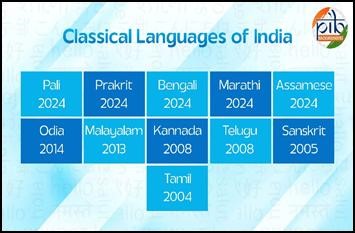7667766266
enquiry@shankarias.in
Mains: GS I - Indian Culture - Salient aspects of Art Forms, Literature
Recently the classical language list of India has got a new addition.

Braille is a tactile writing system used by people who are blind or have a visual impairment, created with a series of six raised dots that represent letters, numbers, and symbols.